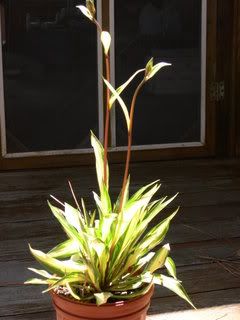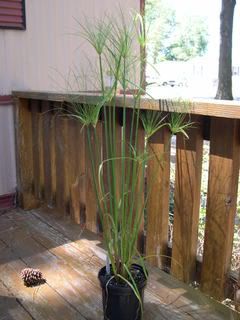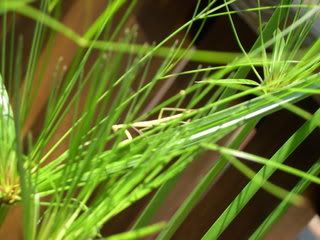Gardening Tips for the Northeast
OK, so last night I got things square with the waterfall. Hopefully, it will hold for the rest of the week. Time to clean out all the leaves that have accumulated at the bottom before they clog up the works!
Anyway, since my gardening is slowing down for the season, I thought I'd share some regional gardening tips for our area from the National Home Gardening Club.
With shorter days and cooler temperatures, September is a transitional period in the garden. Many annuals are on their last legs, and perennials need some care before the thermometer drops.
*Add ornamental grasses to the fall perennial garden. They add texture, color, and sound to the landscape and provide winter shelter for wildlife.
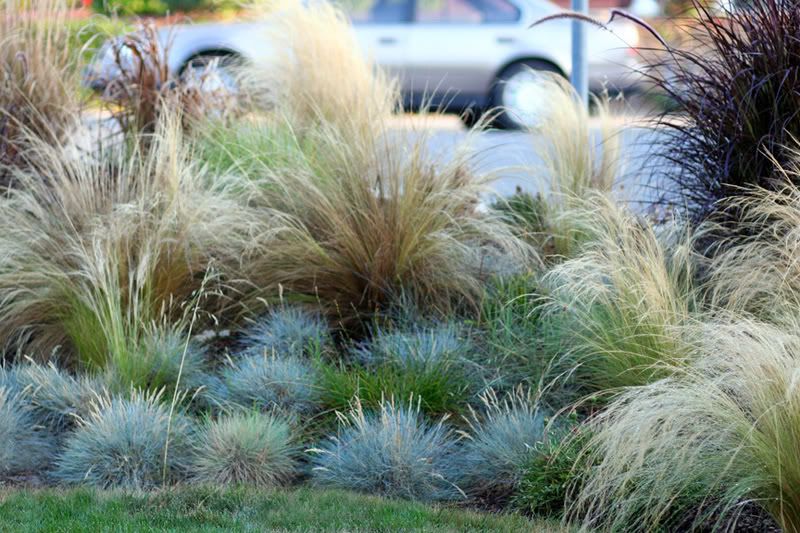
*Fall is the perfect time to plant new perennials. The warm soil and cooler temperatures let them establish strong roots before winter and get a head start on spring growth.
*Stop fertilizing perennials, roses, and shrubs. It will stimulate delicate new growth that will be damaged by winter's cold. Wait until next spring.
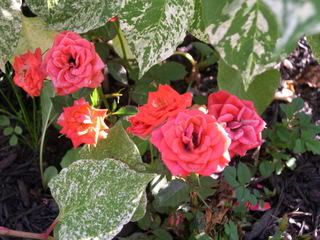
*Buy spring bulbs early for planting in October. Garden centers and mailorder catalogs have the best selections now.
*Keep gardens tidy. When veggies have finished, remove the plants and other debris. Unkempt gardens are favorite winter hiding places for disease and pests.
*Watch the weather. Know your first frost date, but remember it's only an average. Mother Nature loves to surprise us. Harvest produce and protect tender plants before the first frost hits. Don't forget your houseplants this time of year; prepare them for returning indoors by gradually moving them into outdoor shade for a bit longer each day. Carefully inspect the foliage and soil for gnats, thrips, and spider mites before bringing plants in for the winter.
For more information or to join the National Home Gardening Club visit http://www.gardeningclub.com/Main/default.aspx
Anyway, since my gardening is slowing down for the season, I thought I'd share some regional gardening tips for our area from the National Home Gardening Club.
With shorter days and cooler temperatures, September is a transitional period in the garden. Many annuals are on their last legs, and perennials need some care before the thermometer drops.
*Add ornamental grasses to the fall perennial garden. They add texture, color, and sound to the landscape and provide winter shelter for wildlife.

*Fall is the perfect time to plant new perennials. The warm soil and cooler temperatures let them establish strong roots before winter and get a head start on spring growth.
*Stop fertilizing perennials, roses, and shrubs. It will stimulate delicate new growth that will be damaged by winter's cold. Wait until next spring.

*Buy spring bulbs early for planting in October. Garden centers and mailorder catalogs have the best selections now.
*Keep gardens tidy. When veggies have finished, remove the plants and other debris. Unkempt gardens are favorite winter hiding places for disease and pests.
*Watch the weather. Know your first frost date, but remember it's only an average. Mother Nature loves to surprise us. Harvest produce and protect tender plants before the first frost hits. Don't forget your houseplants this time of year; prepare them for returning indoors by gradually moving them into outdoor shade for a bit longer each day. Carefully inspect the foliage and soil for gnats, thrips, and spider mites before bringing plants in for the winter.
For more information or to join the National Home Gardening Club visit http://www.gardeningclub.com/Main/default.aspx
Labels: east coast perennials, gardening tips, house plants, national home gardening club, northeast, ornamental grasses, spring bulbs
 RSS
RSS

